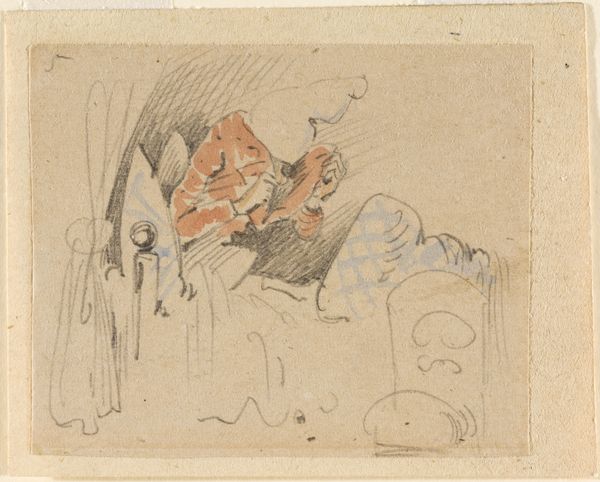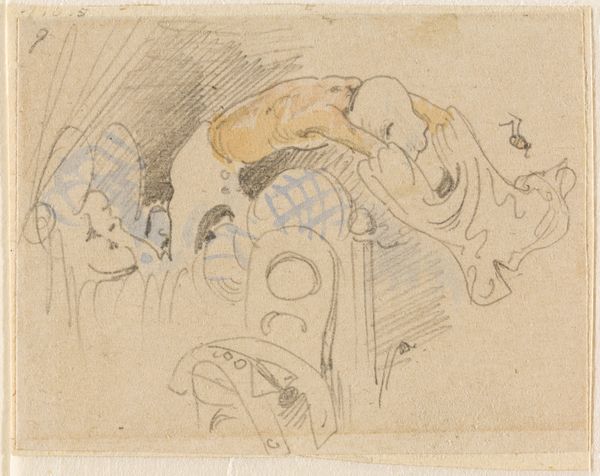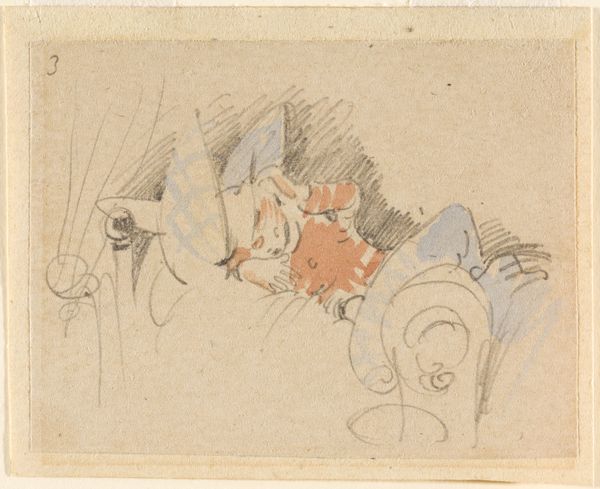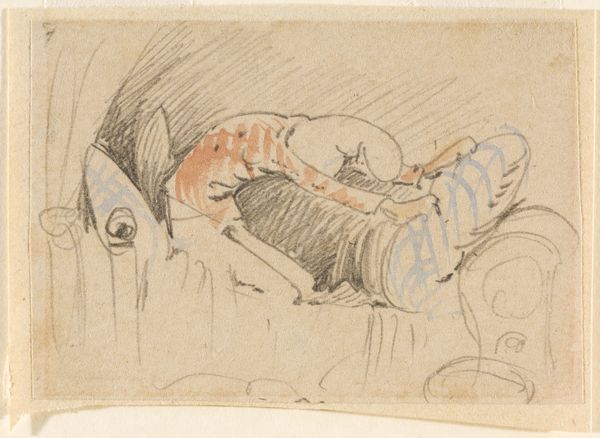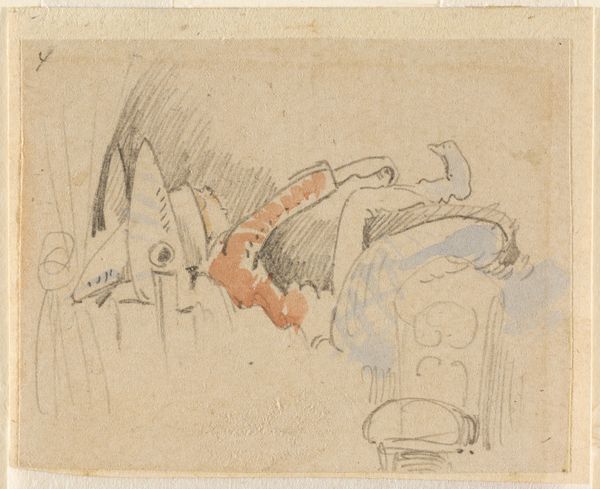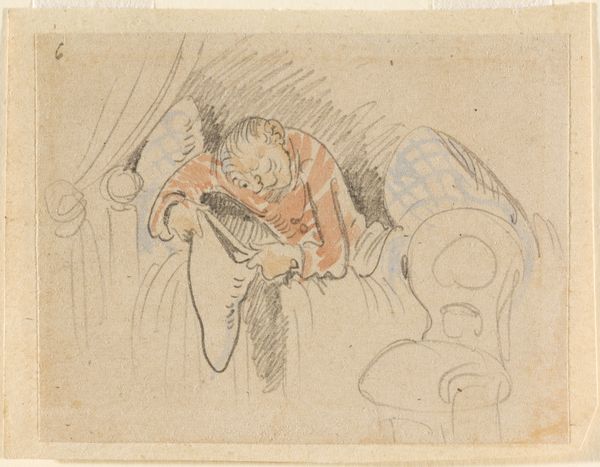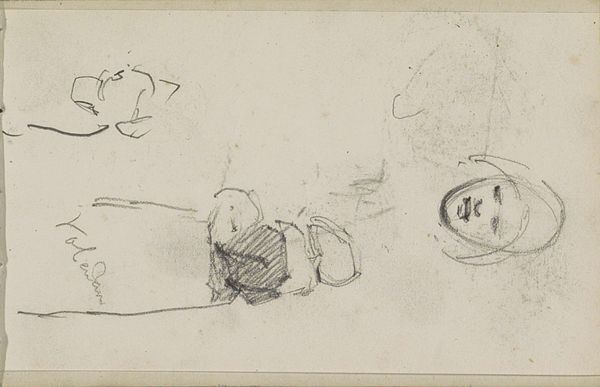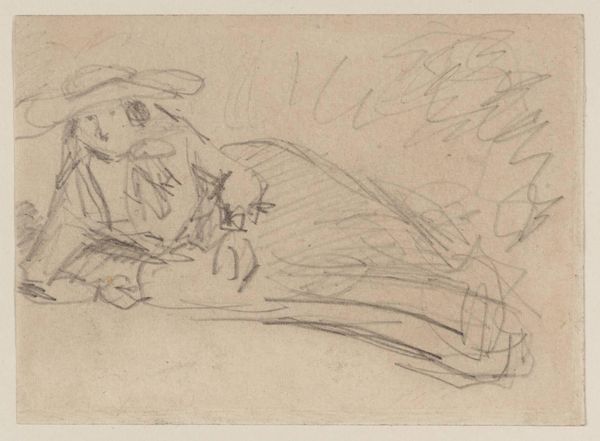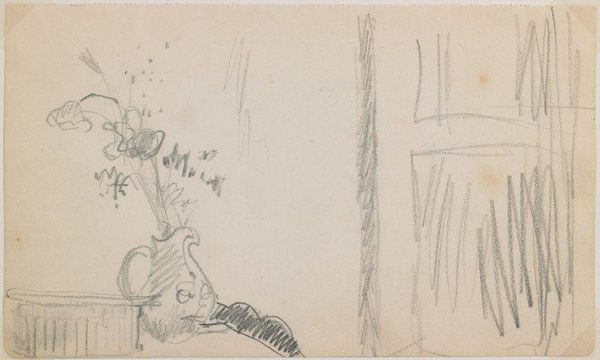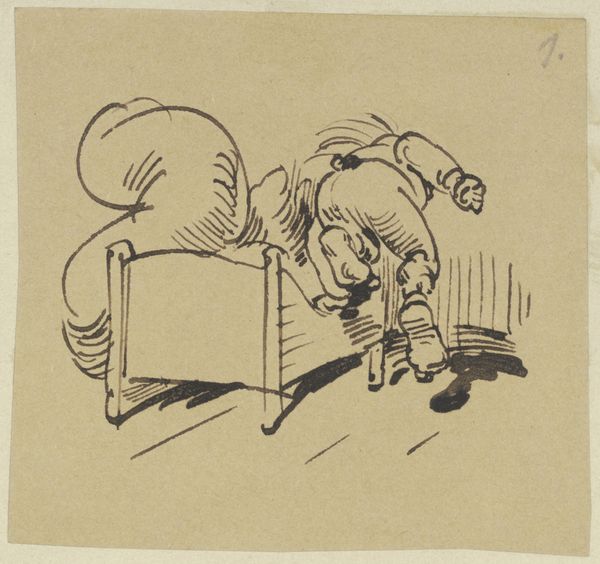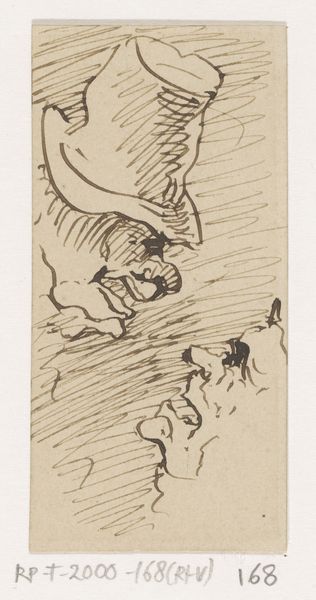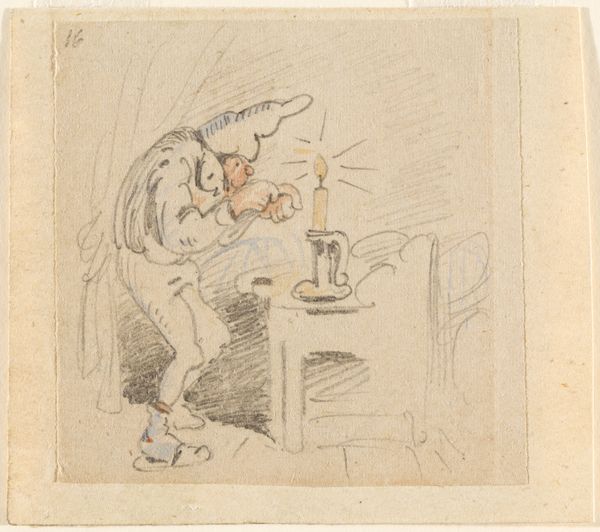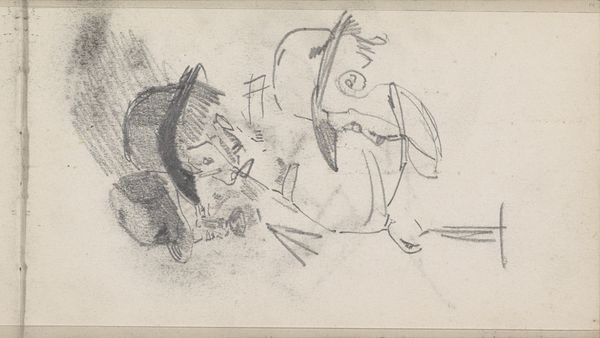
Die gestörte, aber glücklich wieder errungene Nachtruhe (Der Floh); 10 1862
0:00
0:00
Copyright: Public Domain
Curator: Here we have "Die gestörte, aber glücklich wieder errungene Nachtruhe (Der Floh); 10," or "The Disturbed, but Happily Regained Night's Rest (The Flea); 10," a pencil drawing created around 1862 by Wilhelm Busch. It is currently part of the collection at the Städel Museum. Editor: The drawing feels so immediate, almost frantic. The scribbled lines and pastel hues give it an air of whimsical unease. The subject certainly doesn't look like they are having an easy rest. Curator: Well, Busch was quite adept at social commentary, using his artwork as satire. "The Flea" may seem a light subject, but insects—and anxieties—in the domestic sphere were fertile ground for exploring wider societal discomforts. Think about cleanliness, hygiene, the control of the body within a rapidly modernizing world. Editor: It’s fascinating how something so small, a flea, could become a symbol for larger anxieties. Is the sleepwear significant here? Curator: Absolutely. The nightcap, for example, would have been common, and it represents domesticity and vulnerability. The crosshatching might even recall bars, hinting at an imprisoned, besieged state of mind. The entire piece really emphasizes the disruption of the domestic sphere, so vital for that period's social order. Editor: I see the symbolism. But, is the “happy regaining” aspect in the title simply sardonic, a darker layer of humor in a very uncomfortable situation? Curator: Busch does employ a keen wit and some dark humor. Perhaps the "happy regaining" is more a suggestion of societal hope than an individual reality, or maybe even the ability for humans to persist amidst difficult realities. But whether it is ironic, the fact remains: this person tried to "win" back their night rest and might have managed it. Editor: Seeing it in that light offers another dimension. It highlights the ever-present tension between private struggles and public facades, anxieties lurking beneath domestic complacency. Thank you. Curator: It highlights a shared condition, and our awareness of it gives value to our museums today, to give refuge and recognition of the art surrounding us.
Comments
No comments
Be the first to comment and join the conversation on the ultimate creative platform.
